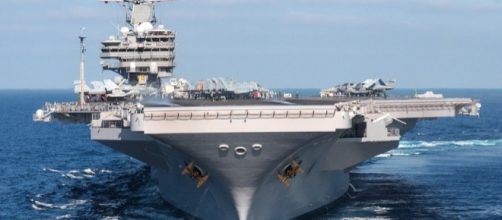The aircraft carrier has been around for close to 100 years and the earliest pioneers in this field were the British and the U.S. Navy. The Chinese have realized the importance of aircraft carrier and bought one used Russian carrier from Ukraine and christened it the Lianong in 2012. Their second indigenous carrier has been launched and is being got ready for fleet duty and if all goes well, should be ready for induction by the end of 2018. Both the Chinese carriers are puny warships in comparison to the U.S. carriers, which are nuclear powered and a great exposition of U.S.
military might, Military.com reported.
The aircraft carrier
The aircraft carrier displaced the battleship during World War II and became the main weapon of the navy. After the war, the U.S. realized that the biggest exponent of world power and domination is the aircraft carrier and the Americans built bigger and heavier warships capable of operating anything from 50 to 75 aircraft. The latest state of art aircraft carriers of the U.S. Navy displace over 100,000 tons and have been designated as the Nimitz class of warships. Russia and China did not have the technology and the large size docks required to build a supercarrier and lagged behind.
Chinese navy
The Chinese want to match the US Navy in the Pacific and the South China Sea and are feverishly building aircraft carriers.
However, to perfect operation of an aircraft carrier requires decades of experience and training is required. Chinese hardly have any experience in this field. Even the Indian navy which rivals China in the Indian Ocean has been operating carriers for over five decades. China is still a long way off matching the operational efficiency of the U.S.
carrier force.
Limitations of size and training
The Chinese warships have limitations in terms of size and displace just about half the tonnage of the U.S. In addition, the Chinese presently do not have a dock large enough to build a 100,000 ton warship. Building one is at least a decade away. China wants to match American power but it's easier said than done and that is the reason one wonders why the U.S.
did not intervene early on in the South China Sea and nip the Chinese activity in the bud.
A long way off
The second Chinese carrier even if it is ready for induction next year, will require another two to three years to reach peak operational efficacy. The Chinese carriers carry half the complement of fighters compared to the U.S. ships and so China is at least two decades away from having a blue water navy, that can operate in the far Pacific and Indian ocean.


